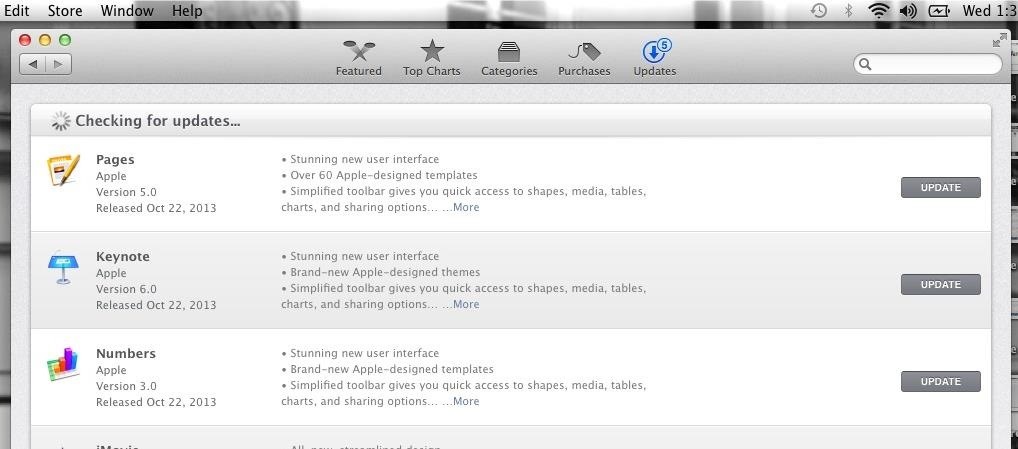Download Pages For El Capitan Free Fire Help. Help on a wide variety of topics is also available in the project Guide and through our Trac portal should you run into any problems installing and/or using MacPorts. Of particular relevance are the installation & usage sections of the former and the FAQ section of the Wiki, where we keep track of. This book has 12 pages and was uploaded by unknown / paw broon on June 8, 2012. The file size is 5.7mb. Non-English Section is Spanish Language Books.
- Download Pages For El Capitan
- Download El Capitan App Store
- Download Pages For El Capitan Version
- Download Pages For El Capitan Installer
System Integrity Protection (SIP)
Apple has implemented a new security feature, System Integrity Protection (SIP), starting with OS X 10.11. SIP prevents anyone from altering the contents of files in key System folders and is designed to protect System files from malware and viruses. SIP also affects third-party apps like Winclone that need to write to files now under protection of SIP. If you are getting an message that the boot sector cannot be updated, or that SIP needs to be disabled, this article may help.
Disabling SIP is a quick and easy process that can be easily re-enabled again after restoring the Winclone image.
Note: Saving/creating a Winclone image does not require disabling SIP.
How to Disable SIP
Disabling SIP requires booting into the recovery partition to run the Terminal command below.
To boot into the Recovery partition, hold Command-R while restarting the Mac.
From the Utilities Menu, select Terminal. On the Terminal command line, enter:
csrutil disable
which will confirm the change with status message:
Successfully disabled System Integrity Protection. Please restart the machine for the changes to take effect.
Reboot back into the El Capitan system partition.
To re-enable SIP, boot back into the recovery partition, open Terminal from the Utilities menu and set state to enabled:
csrutil enable
Note: As of MacOS Sierra 10.12.2, it is possible to re-enable SIP from the Mac system rather than reboot into the Recovery HD. To re-enable SIP, run this command as root in Terminal:
/usr/bin/csrutil clear
Entering your system password and hit enter and the output should be:
Successfully cleared System Integrity Protection. Please restart the machine for the changes to take effect.
What if the “csrutil” command is not found?
Download Pages For El Capitan

For additional help, please contact support@twocanoes.com.
System Integrity Protection (SIP)
Apple has implemented a new security feature, System Integrity Protection (SIP), starting with OS X 10.11. SIP prevents anyone from altering the contents of files in key System folders and is designed to protect System files from malware and viruses. SIP also affects third-party apps like Winclone that need to write to files now under protection of SIP. If you are getting an message that the boot sector cannot be updated, or that SIP needs to be disabled, this article may help.
Disabling SIP is a quick and easy process that can be easily re-enabled again after restoring the Winclone image.
Note: Saving/creating a Winclone image does not require disabling SIP.
How to Disable SIP
Disabling SIP requires booting into the recovery partition to run the Terminal command below.
To boot into the Recovery partition, hold Command-R while restarting the Mac.
Download El Capitan App Store
From the Utilities Menu, select Terminal. On the Terminal command line, enter:
csrutil disable
which will confirm the change with status message:
Successfully disabled System Integrity Protection. Please restart the machine for the changes to take effect.
Download Pages For El Capitan Version
Reboot back into the El Capitan system partition.
To re-enable SIP, boot back into the recovery partition, open Terminal from the Utilities menu and set state to enabled:
csrutil enable
Note: As of MacOS Sierra 10.12.2, it is possible to re-enable SIP from the Mac system rather than reboot into the Recovery HD. To re-enable SIP, run this command as root in Terminal:
/usr/bin/csrutil clear
Entering your system password and hit enter and the output should be:
Successfully cleared System Integrity Protection. Please restart the machine for the changes to take effect.
What if the “csrutil” command is not found?


Download Pages For El Capitan Installer
For additional help, please contact support@twocanoes.com.